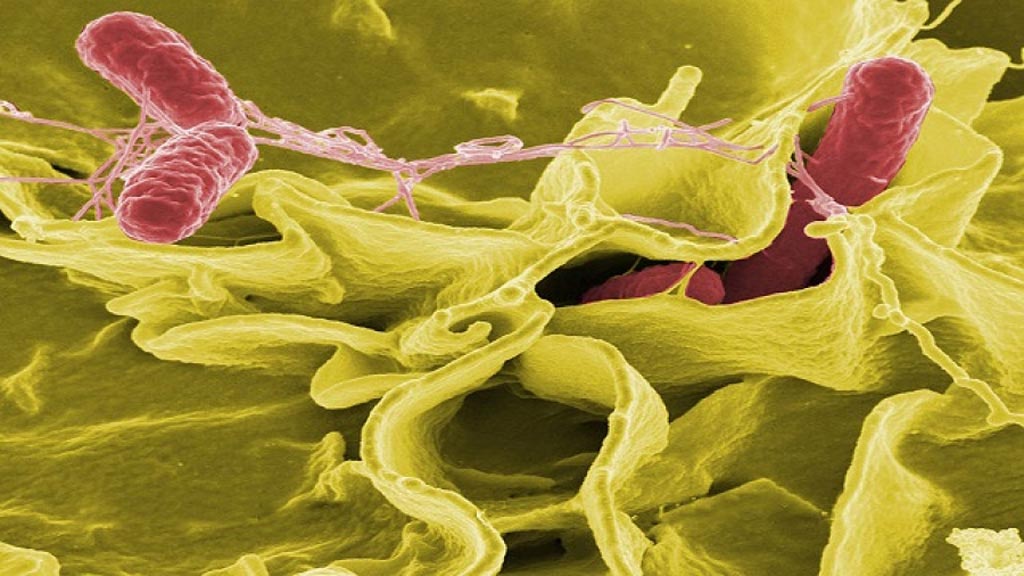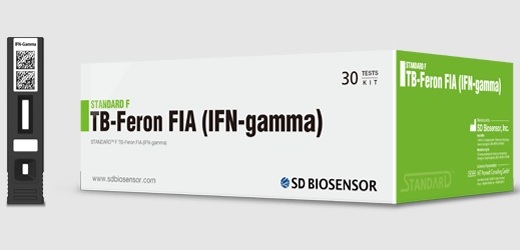Antibiotic-Resistant Gene Discovered in Salmonella
By LabMedica International staff writers
Posted on 05 Jun 2017
A team of investigators has discovered a gene, named fosA7, which confers a high level of resistance to the important broad-spectrum antibiotic fosfomycin. The researchers found fosA7 in isolates of the pathogen Salmonella enterica from broiler chickens.Posted on 05 Jun 2017
Fosfomycin has been a safe and effective agent for eliminating infections caused by multidrug-resistant bacteria. The product of fosA7 is the enzyme glutathione-S-transferase, which inactivates fosfomycin by binding to it and rupturing a molecular ring its structure. The “7” in fosA7 indicates that this is the seventh antibiotic resistant fosA gene that has been discovered.

Image: The newly discovered fosfomycin-resistance gene fosA7 was found in isolates of the pathogen Salmonella enterica from broiler chickens (Photo courtesy of Agriculture and Agri-Food Canada).
“Vigilant monitoring for the spread of fosfomycin resistance in bacteria, isolated from humans and animals, is needed,” said corresponding author Moussa S. Diarra, PhD, research scientist at from Agriculture and Agri-Food Canada (AAFC; Guelph, Ontario, Canada). Currently, there is only limited fosfomycin resistance among Salmonella species. But the powerful resistance the fosA7 gene confers is worrisome, said Dr. Diarra. It could spread via horizontal gene transfer among different Salmonella serovar strains as well as other to bacterial pathogens, due to increased use of fosfomycin in both clinical and veterinary settings.
With that in mind, the researchers tested the strength of the resistance that fosA7 could confer on the closely related Salmonella enterica serovar Enteritidis by inserting the gene into the chromosome of non-antibiotic-resistant S. Enteriditis. Their worries were confirmed: the gene boosted the minimum concentration of fosfomycin required to inhibit microbe reproduction by more than 256-fold.
These results provided strong support for the hypothesis that fosA7 confers fosfomycin resistance, and that if fosA7 were transferred to plasmids it could induce a high level of resistance in recipient bacterial strains.
Fosfomycin resistance genes are often present in multidrug resistant bacteria. “This could further challenge the use of fosfomycin as an alternative treatment approach against urinary tract infections caused by both multidrug resistant E. coli, and blood infections from multidrug resistant Salmonella,” said Dr. Diarra.
The investigators have thus far found fosA7 only on S. enterica serovar Heidelberg and three other serovar strains. In the current study, they found fosA7 in all 15 Salmonella Heidelberg isolates in their collection. Salmonella enterica serovar Heidelberg is among the most common causes of human salmonellosis worldwide. The rise of resistance to multiple antibiotics, particularly to extended-spectrum cephalosporins, has limited the number of therapeutic options against this Salmonella serovar.
The study, by Rehman MA et al, was published May 22, 2017, in the journal Antimicrobial Agents and Chemotherapy.
Related Links
Agriculture and Agri-Food Canada














